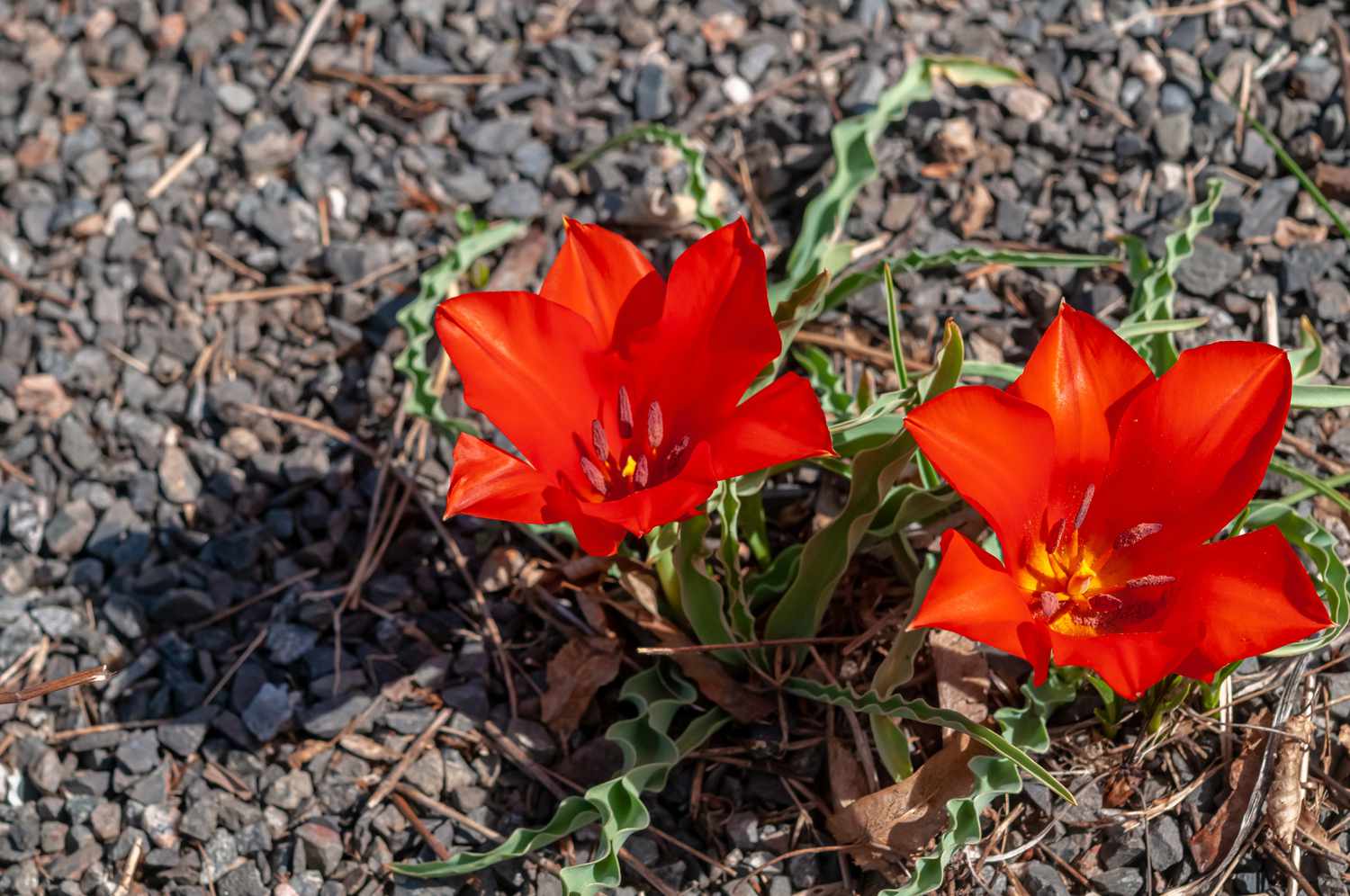The Eyed Tulip (Tulipa stapfii), known locally as “Gowarikh,” blooms each spring across the rocky hillsides of Balochistan. Distinguished by its vivid red petals and dark “eye” markings, this rare flower has become a symbol of beauty and resilience for the people of the region. Beyond its striking appearance, the Eyed Tulip carries a rich legacy, embodying ecological significance, cultural reverence, and a deep emotional connection to the Baloch identity—particularly as a symbol of remembrance for those who have sacrificed for justice and freedom.
Ecological Background
The Eyed Tulip is native to the mountainous areas of South Asia, Central Asia, and the Middle East, where it grows in arid, rocky soils. Its ability to thrive in these harsh conditions has made it well-suited to the demanding environment of Balochistan. Botanists note that the tulip’s vibrant colors and central “eye” marking are likely adaptations to attract specific pollinators, including local bees and butterflies.
Blooming in early spring, the Eyed Tulip provides a vital nectar source for pollinators, playing an important role in supporting local biodiversity and pollination cycles. This period of flowering coincides with the beginning of warmer weather, when local flora and fauna are emerging from winter dormancy. The Eyed Tulip’s role in pollination helps sustain the local ecosystem, contributing to the renewal of plant life in the region’s challenging terrain.
Cultural Significance
In Balochistan, the Eyed Tulip is more than a botanical rarity—it is a symbol of resilience and hope. Known for its short but vibrant bloom, the tulip has inspired stories and folklore throughout generations, celebrated as an emblem of survival and hope. For the people of the region, the annual appearance of the tulip heralds the arrival of spring, marking a time of renewal after the barren months of winter.
Emotional Connection
The Eyed Tulip holds a central place in Balochi and Brahui literature as a symool of love, longing, and sacrifice. In poetry, the flower is often used to express resilience and the strength of the human spirit.
In Brahui poetry, the tulip often represents the fleeting beauty of life, with verses questioning its ability to endure the harshness of summer—a metaphor for resilience amidst hardship:
“Have the tulips embraced the summer’s flame? Then surely spring has met its end.”
In Balochi poetry, the tulip reflects the homeland’s beauty and strength, embodying qualities associated with heroic figures. The lines,
“In the flowers, you are the red tulip, graceful like Sammul, a lesson like Sharul, the song of the homeland, like the nightingale you are,”
celebrate the tulip as a symbol of grace, courage, and devotion, likening it to revered figures Sammul and Sharul, remembered for their bravery and self-sacrifice.
Symbol of Remembrance
Each year on November 13th, the Baloch nation observes “Baloch Martyrs Day” to honor those who have sacrificed their lives for justice and freedom. On this day, the Eyed Tulip, known locally as “Gowarikh,” is widely used as a symbol of remembrance. Its red petals, evocative of both beauty and sacrifice, have come to represent resilience, dignity, and the enduring spirit of those who have fought for the Baloch cause.
The tulip serves as a powerful emblem, featured in gatherings, memorials, and social media tributes, uniting people in a shared memory. For the Baloch people, the flower’s striking appearance is more than a natural marvel; it is a poignant reminder of lives lost and the ongoing struggle for justice and freedom.

